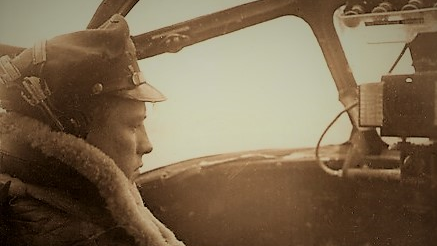THE B-17F FLYING FORTRESS TRAINING VERSION
First flown in July, 1935, the Boeing B-17 Flying Fortress, along with the Consolidated B-24 Liberator were the two main heavy bombers for the United States during WW2. When production was terminated in May, 1945, 12,726 B-17s had been built and delivered. Almost 4700 were lost over Europe.
THE B-17H RESCUE “DUMBO” VERSION

The B17 version the crew would be flying once they reached their operational unit in the Pacific was the B-17H, nicknamed the “Flying Dutchman”. They were B17G models that were modified to carry the new 27 foot Type A-1 air-droppable life boat. The life boat replaced the B17G bomb bay and belly turret. The twin 50 caliber chin turret was replaced by an airborne search radar antenna dome (SCR-717-B, with the operator sitting in the radio compartment next to the radio operator) The B-17H was later designated the SB-17G in 1948. Plans were made for the conversion of approximately 130 B17Gs into search and rescue aircraft but the end of the war stopped the conversion.

THE BOAT TYPE A-1 RESCUE BOAT Constructed of laminated mahogany plywood, the G-model’s A-1 lifeboat contained twenty watertight compartments and carried two air-cooled engines, each of which could power the boat at five knots; or with both engines running, eight knots. To assist survivors in reaching the boat, the A-1 possessed saltwater-activated rocket lines that ejected when the lifeboat struck the water. The SB-17 carried a nine-man crew: two pilots, one navigator, one radar operator, one flight engineer/top turret gunner, one radio operator, two waist scanner/gunners, and one tail scanner/gunner. (1)
Late in that war, the United States had converted a few B-17Gs, redesignated the B-17H, to assist in the rescue of airmen downed in the water. These rescue bombers carried under their bellies a 27-foot boat (termed the A-1) that could be dropped by parachute and which contained enough food, water, and clothing for twelve survivors to last for about twenty days. The first B-17H operational boat drop took place in April 1945, shortly before the war’s end in Europe. In the European theater the AAF, because of this tardy development of its own lifeboats, was long dependent upon the British Air/ Sea Rescue Service. The first rescue using an AAF airborne lifeboat was in early April 1945 off the coast of Denmark. Six men were adrift in a raft; the waves were high, whipped by a 50-knot wind. RAF Warwicks dropped three lifeboats, but all had broken in the rough water or drifted away. A B-17 of the 5th Emergency Rescue Squadron dropped its boat. Ninety seconds after it had hit the water, the six men were aboard. Twelve minutes later they had the engine running and were heading for England. They survived a bad storm but then, having run out of gas, drifted at the mercy of the seas. On the third day a torpedo boat homed in on the lifeboat’s Gibson Girl and brought the men home. A second successful drop was made on 1 May by the 1st Emergency Rescue Squadron to a fighter pilot in the midst of a minefield outside Trieste harbor. The pilot rated the operation “perfect,” and he spoke with some authority, having already been rescued twice in boats dropped by the British. [Top] Constructed of laminated mahogany plywood, the G-model’s A-1 lifeboat contained twenty watertight compartments and carried two air-cooled engines, each of which could power the boat at five knots; or with both engines running, eight knots. To assist survivors in reaching the boat, the A-1 possessed saltwater-activated rocket lines that ejected when the lifeboat struck the water. The SB-17 carried a nine-man crew: two pilots, one navigator, one radar operator, one flight engineer/top turret gunner, one radio operator, two waist scanner/gunners, and one tail scanner/gunner. (1)
In the European theater the AAF, because of this tardy development of its own lifeboats, was long dependent upon the British Air/ Sea Rescue Service. The first rescue using an AAF airborne lifeboat was in early April 1945 off the coast of Denmark. Six men were adrift in a raft; the waves were high, whipped by a 50-knot wind. RAF Warwicks dropped three lifeboats, but all had broken in the rough water or drifted away. A B-17 of the 5th Emergency Rescue Squadron dropped its boat. Ninety seconds after it had hit the water, the six men were aboard. Twelve minutes later they had the engine running and were heading for England. They survived a bad storm but then, having run out of gas, drifted at the mercy of the seas. On the third day a torpedo boat homed in on the lifeboat’s Gibson Girl and brought the men home.31
A second successful drop was made on 1 May by the 1st Emergency Rescue Squadron to a fighter pilot in the midst of a minefield outside Trieste harbor. The pilot rated the operation “perfect,” and he spoke with some authority, having already been rescued twice in boats dropped by the British.
